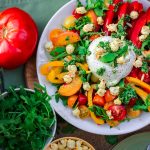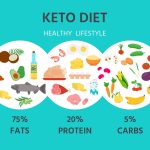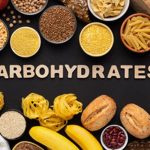BRAT Diet for Diarrhea-Diarrhea can be a distressing and debilitating condition, leading to dehydration and discomfort. One of the most commonly recommended dietary approaches to manage diarrhea is the BRAT diet. This diet consists of bland, easy-to-digest foods that help stabilize the digestive system. In this comprehensive guide, we will explore the BRAT diet in detail, including its components, benefits, limitations, and answers to frequently asked questions.
What is the BRAT Diet?
The BRAT diet is an acronym for:
- Bananas
- Rice
- Applesauce
- Toast
These foods are recommended for their blandness and ease of digestion, making them suitable for individuals recovering from gastrointestinal distress, particularly diarrhea.
Components of the BRAT Diet
- Bananas
- Benefits: Bananas are rich in potassium, an essential electrolyte that can be lost during bouts of diarrhea. They are also gentle on the stomach and help firm up stool due to their pectin content.
- How to Use: Eat ripe bananas as a snack or add them to oatmeal or yogurt.
- Rice
- Benefits: Plain white rice is low in fiber, which helps reduce bowel movements and provides a source of energy. It is easy to digest and can help bind stool.
- How to Use: Cook rice until it’s soft and serve plain or with a small amount of broth.
- Applesauce
- Benefits: Applesauce provides pectin and is easier to digest compared to raw apples. It can help to bulk up stool and provide some vitamins and minerals.
- How to Use: Eat applesauce on its own or mix it with plain yogurt.
- Toast
- Benefits: Plain toast is easy on the stomach and provides carbohydrates for energy. It also helps to absorb excess stomach acid.
- How to Use: Toast bread until it’s lightly browned and eat without butter or spreads.
Benefits of the BRAT Diet
1. Ease of Digestion
The BRAT diet consists of bland foods that are easy on the digestive system, reducing irritation and allowing the gut to recover.
2. Nutrient Replacement
Although the BRAT diet is low in nutrients, bananas and applesauce can help replenish lost potassium and other electrolytes.
3. Reduction of Gastrointestinal Irritation
The bland nature of the BRAT diet helps minimize gastrointestinal irritation and discomfort.
4. Stool Formation
Rice and bananas can help to bulk up stool and reduce the frequency of bowel movements.
Limitations of the BRAT Diet
1. Nutrient Deficiency
The BRAT diet is low in essential nutrients like protein, vitamins, and minerals. It is not intended for long-term use and should be supplemented with other foods once diarrhea symptoms improve.
2. Limited Fiber
While the low fiber content can help manage diarrhea in the short term, it does not support long-term digestive health. Gradually reintroducing fiber-rich foods is important as recovery progresses.
3. Potential for Bacterial Overgrowth
The diet’s lack of variety may lead to an imbalance in gut bacteria if followed for extended periods. It is important to reintroduce a balanced diet as soon as possible.
How to Follow the BRAT Diet
1. Stay Hydrated
Diarrhea can lead to significant fluid loss. Drink plenty of water, oral rehydration solutions, or clear broths to stay hydrated.
2. Introduce Foods Gradually
Start with small portions of BRAT foods and gradually increase the amount as tolerated. Monitor your symptoms and adjust your diet as needed.
3. Monitor Symptoms
If symptoms persist for more than a couple of days or worsen, seek medical attention. The BRAT diet is a temporary solution and should be used as part of a comprehensive treatment plan.
4. Reintroduce Nutrient-Rich Foods
Once diarrhea improves, gradually reintroduce a balanced diet with fruits, vegetables, lean proteins, and whole grains to ensure adequate nutrition and support gut health.
Frequently Asked Questions (FAQs)
What should I do if I can’t tolerate the BRAT diet?
If you are unable to tolerate the BRAT diet or if your symptoms persist, consider alternative bland foods such as clear broths, plain crackers, or boiled potatoes. Consult a healthcare provider if symptoms continue or worsen.
How long should I stay on the BRAT diet?
The BRAT diet is typically recommended for 24 to 48 hours, or until symptoms improve. It is important to reintroduce other foods gradually to ensure a balanced diet and adequate nutrition.
Can I drink coffee or tea while on the BRAT diet?
It is best to avoid caffeinated beverages, such as coffee and tea, as they can irritate the digestive system and contribute to dehydration. Stick to clear fluids like water and herbal teas.
Is the BRAT diet suitable for children?
The BRAT diet can be used for children with diarrhea, but it’s important to ensure they stay hydrated and receive adequate nutrition. Consult with a pediatrician for specific recommendations based on the child’s age and health condition.
Can I use the BRAT diet for other digestive issues?
The BRAT diet is primarily intended for managing diarrhea. For other digestive issues, such as nausea or vomiting, different dietary approaches may be recommended. Consult a healthcare provider for personalized advice.
Are there any supplements I should consider while on the BRAT diet?
While on the BRAT diet, you may consider taking a multivitamin or electrolyte supplement to address potential nutrient deficiencies. Consult with a healthcare provider before starting any supplements.
Conclusion
The BRAT diet is a simple and effective short-term solution for managing diarrhea. By consuming bland, easy-to-digest foods, you can help stabilize your digestive system and reduce symptoms. However, it is important to use the BRAT diet as part of a broader treatment plan and to reintroduce a balanced diet once symptoms improve.
Understanding the benefits and limitations of the BRAT diet can help you make informed decisions about managing diarrhea and supporting your overall health. If symptoms persist or worsen, seek medical advice to ensure appropriate care and recovery.












